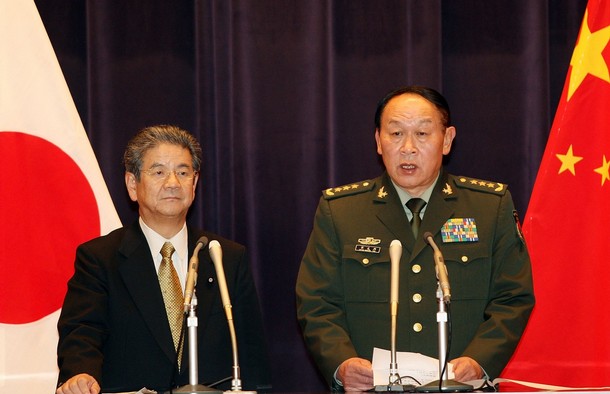Indeed the left-centred Hatoyama government is repeating its strong commitment to Sino-Japanese relations and has already proven that it is capable of bringing changes, unprecedented compared to what was achieved under the long reign of successive LDP governments.
Despite this impression, the agreement on joint military exercises is more the product of the continuity rather than a departure from the former LDP government’s China policy. The Hatoyama Government has consistently expressed its intention to continue developing the Sino-Japanese relations towards a ‘mutually beneficial relationship based on common strategic interests,’ which was set as the goal of the bilateral relations by Premier Wen Jiabao and the then Prime Minister Shinzo Abe in October 2006. Since then, Chinese and Japanese governments have been working together to cram the substance of cooperation into this framework. The announced plan of bilateral military exercises is no exception, but is a building-block on the preceding agreement which former Japanese Defence Minister Hamada reached when in China during March. So far, the DPJ clearly appears to be staying on the track with the overall framework of Sino-Japanese relations established by its predecessor LDP government.
What should not be missed here is that the continuity in the bilateral context does not however mean no-change in its implication. Rather the strategic context which the Hatoyama government is rapidly reshaping (whether purposefully or unintentionally) can make the ramifications of Sino-Japanese cooperation diametrically different to the region. In order to understand what I mean here, a counterfactual experiment is helpful. Let’s take the US perspective on the what-if situation where the same agreement had been reached in October 2006, when the current momentum of building ‘a mutually beneficial relationship based on common strategic interests’ was started. The strategic context at that time was as follows. By concluding the Defence Policy Review Initiatives in May 2006, the Bush Administration and Koizumi government successfully hedged the risks accompanying the rise of China. The remaining problem at that time was that hedging under the Koizumi prime ministership lacked proper reassurance efforts. Koizumi was undermining the reassurance or unnecessarily sending the reverse message by letting Sino-Japanese relations drift. The then Bush administration was clearly aware of this risk, and for this reason found it was in US interests for succeeding Prime Minister Abe to expeditiously revive high-level bilateral communications with China. Thus, if joint military exercises had been agreed to and implemented between China and Japan in October 2006, the US would most likely have welcomed it as a great step towards introducing healthy reassurance for a vibrant hedging policy.
By contrast it is questionable if the current strategic context of December 2009 would allow the Obama administration to fully welcome the agreement. True, as Deputy State Secretary James Steinberg argued, the Obama Administration’s China policy suggests the necessity of ‘strategic reassurance’ efforts between China and the rest of the world including Japan. In this sense, more cooperative Sino-Japanese relations might appear healthy, however, it would look so only if the condition of the US-Japan alliance, one of whose objectives remains to hedge China, were in good shape as well. In the time of December 2009, the US and Japan are at odds over the relocation plan of the US Marine Corps bases in Okinawa, which has delayed the launching of a new alliance redefinition initiative marking its 50th anniversary in 2010. From China’s perspective, this means that the political foundation of the US-Japan alliance’s hedging strategy looks increasingly weak. If the alliance continues to drift while Sino-Japanese relations stay on track, a risk of strategic appeasement to China (reassurance without hedging) may begin to surface. The Hatoyama government must know that what is best for the sake of not only the US, but also many other East Asian states and Japan itself, is neither ‘hedging without reassurance’ nor ‘reassurance without hedging,’ but a delicate marriage of both. Whether the Sino-Japanese agreement on joint military exercises is good news for East Asia depends on how the Hatoyama government manages its long-standing alliance with the US, and shapes the strategic context where Sino-Japanese cooperation advances.
Yusuke Ishihara is a MA graduate of the Strategic and Defence Studies Centre at the Australian National University.

